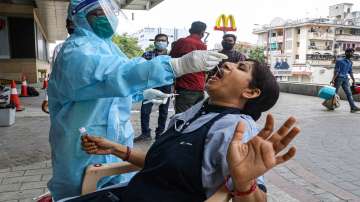The addition of a simple processing step to saliva samples before testing may improve Covid-19 detection rate, eliminate the challenges of nasopharyngeal testing and facilitate mass surveillance, researchers say.
The researchers, including Ravindra Kolhe from Augusta University in the US, found that an innovative protocol that processes saliva samples with a bead mill homogeniser before real-time PCR (RT-PCR) testing results in higher sensitivity compared to NPS samples.
"Saliva as a sample type for Covid-19 testing was a game-changer in our fight against the pandemic. It helped us with increased compliance from the population for testing along with decreased exposure risk to the healthcare workers during the collection process," said lead investigator Kolhe.
The study, published in The Journal of Molecular Diagnostics, included samples from a hospital and nursing home as well as from a drive-through testing site.
In the first phase (protocol U), 240 matched NPS and saliva sample pairs were tested prospectively for SARS-CoV-2 RNA by RT-PCR.
In the second phase of the study (SalivaAll), 189 matched pairs, including 85 that had been previously evaluated with protocol U, were processed in an Omni bead mill homogeniser before RT-PCR testing.
An additional study was conducted with samples with both protocol U and SalivaAll to determine if bead homogenisation would affect the clinical sensitivity in NPS samples.
Finally, a five-sample pooling strategy was evaluated. Twenty positive pools containing one positive and four negative samples were processed with the Omni bead homogeniser before pooling for SARS-CoV-2 RT-PCR testing and compared to controls.
In Phase I, 28.3 per cent of samples tested positive for SARS-CoV-2 from either NPS, saliva, or both. The detection rate was lower in saliva compared to NPS (50.0 per cent vs. 89.7 per cent).
In Phase II, 50.2 per cent of samples tested positive for SARS-CoV-2 from either saliva, NPS, or both.
The detection rate was higher in saliva compared to NPS samples (97.8 per cent vs. 78.9 per cent). Of the 85 saliva samples tested with both protocols, the detection rate was 100 per cent for samples tested with SalivaAll and 36.7 per cent with protocol U.
Latest World News
